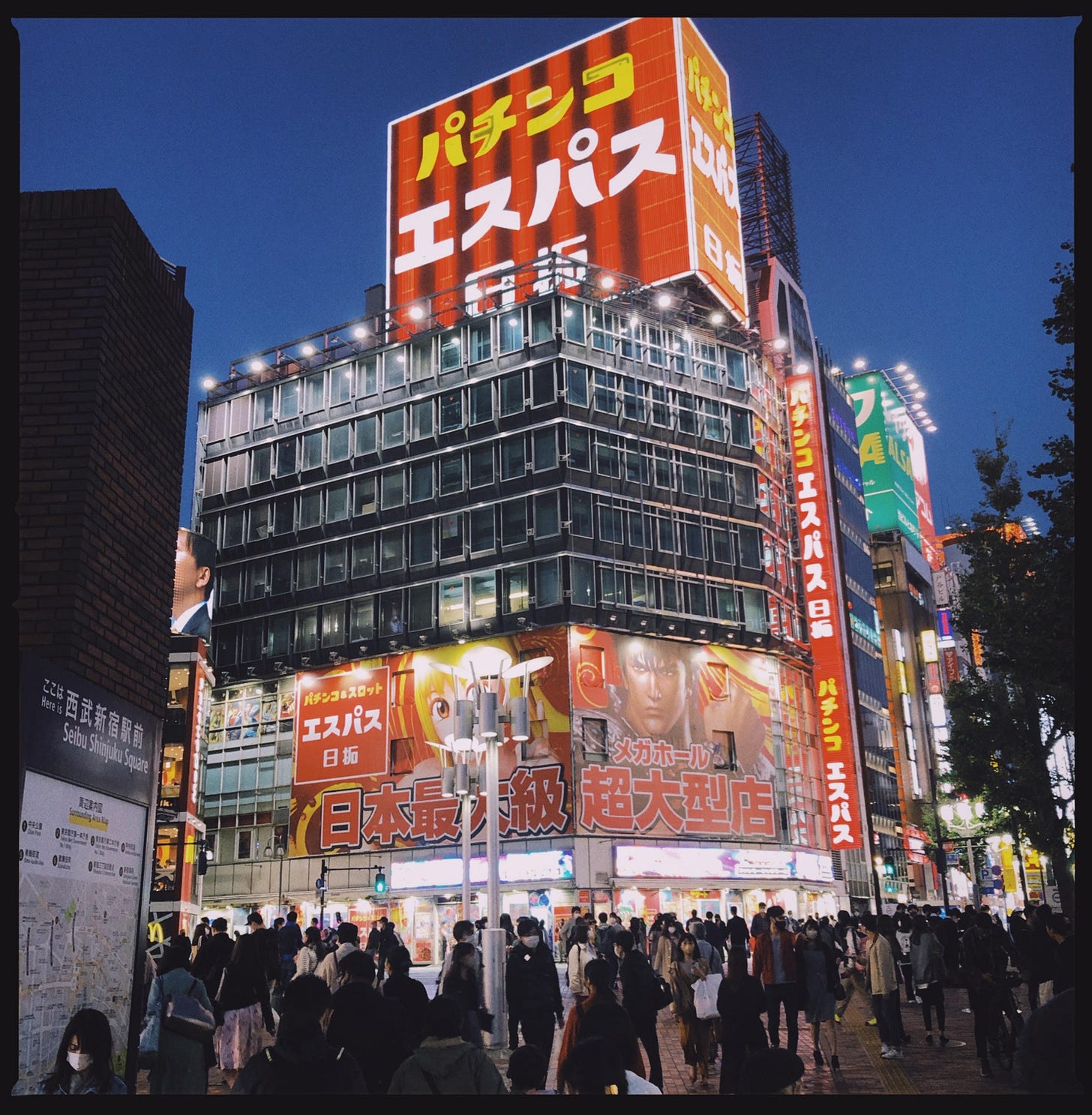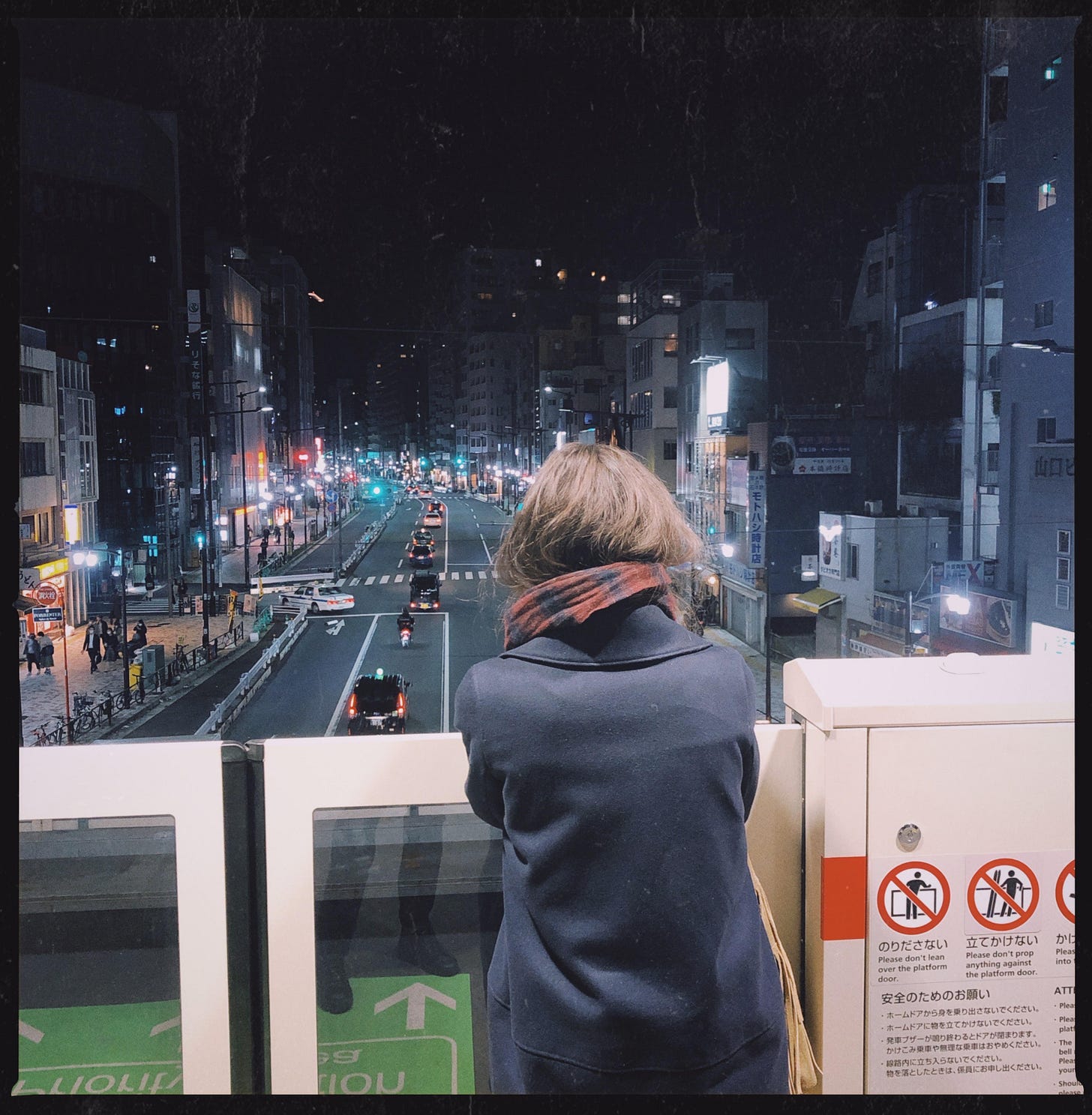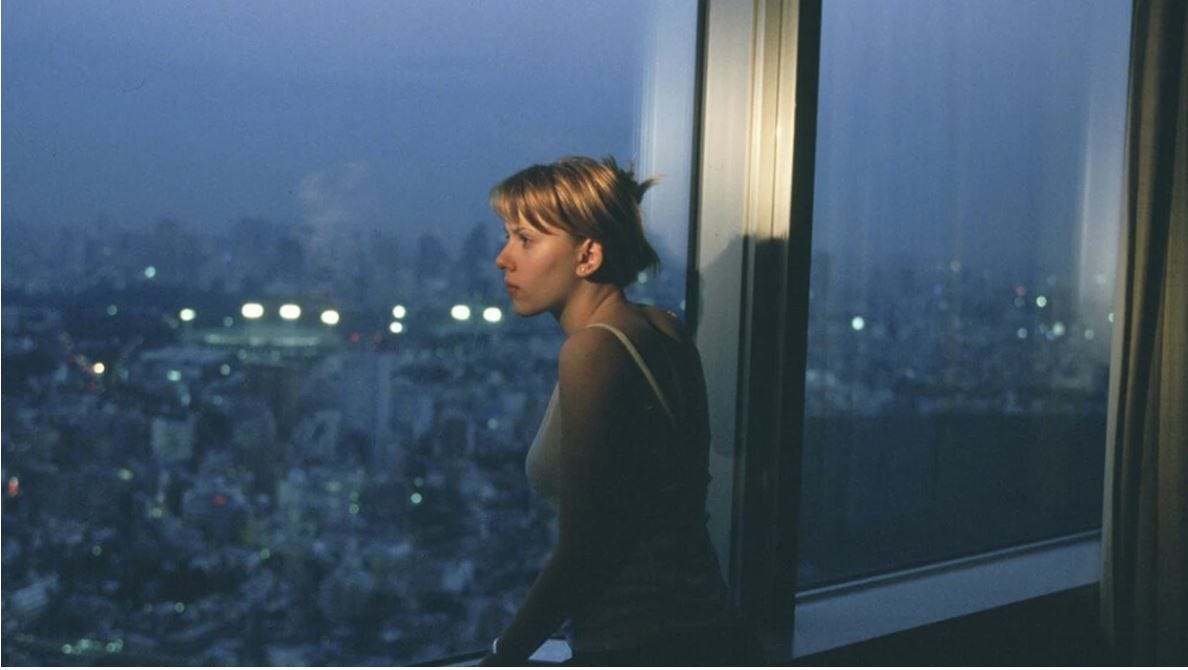Swiping
On Anhedonia & Online dating: a response to Anthony Galluzzo's 'Love In the Age of the Algorithm'
These brief reflections were prompted by ’s essay on ‘Love In the Age of the Algorithm’, which is forthcoming, you can read some of it on his Substack, which I highly recommend.
On reflection, I’m grateful to have done the majority of my shagging when I was completely skint. I believe it taught me several valuable lessons, though it’s difficult to say what they are exactly. Perhaps that attraction in its most authentic and essential form is inherently atavistic and far removed from other material factors, which are taught to be quite important. I sense that it’s a lesson somewhat alien to younger men who have come of age as digital natives; those whose adolescence and maturation have occurred wholly under the relentless gaze of the digital panopticon, and whose relations, sexual and otherwise, are mediated by the banal technocratic logic of Semio-corporations.
Many have seemingly grown accustomed to viewing themselves, and others, as composed entirely of a set of attributes (or ‘data’ points) both physical and mental, negative and positive. Such a view either takes the form of a drive towards optimization, usually taking the form of a tendency towards homogenization that accords with prevailing trends - or a descent into extreme states of solipsistic despair at what one seemingly lacks. Even the vibrant and variegated forms of youthful counter-culture, which once offered a sense of refuge and respite from normative expectations, seem to exist now merely as costumes which one may adopt or discard at will, assuming characteristics, mores, and behaviours in place of any organic personal investment in them.
In his essay, Anthony Galuzzo draws all of the necessary connections between the affective, political and material conditions of what seems, at first, to be a very contemporary problem - but which has a history that pre-dates the technological present. I need not reproduce his nuanced essay in full, but I hope that he will forgive my quoting from some of his sources. In particular, I was very taken with his engagement with Jean-Pierre Dupuy, an acolyte of Rene Girard, and his 2007 article on the ethics of nanotechnology.
Depuy writes of the significance of the Greek myth of Amphityron, whose wife Zeus unsuccessfully attempts to seduce by transforming himself into a perfect simulation of her husband. However, he is ultimately rejected by her as an imposter:
When one loves somebody, one does not love a list of characteristics, even were it to be sufficiently exhaustive to distinguish the person in question from everyone else. The most perfect simulation still fails to capture something, and it is this ‘something’ which is the essence of love, that poor word that says everything and explains nothing.
On a less profound level than Love (on which I prefer to say as little as possible), the intangible dimensions of attraction seem similarly to be misunderstood in the contemporary moment. Galluzzo has imbued his wonderful essay with some recent personal experiences of contemporary dating. His reflections prompted me to think back to my own, limited and earlier, experience with the same.
Memories of romantic encounters in my early twenties are no doubt idealised and somewhat vague, and it is perhaps this unknown quality that elicits nostalgia. For much of my younger years, I had a basic ‘pay-as-you-go’ mobile phone and never often sent texts. Any text I sent served some practical purpose, a prelude to some physical meeting or interaction. Everyone would go out, and that’s where one would inevitably meet women. When those interactions progressed they sometimes involved little talking at all – which is not to say that they lacked communication, which, after all, is only 45% verbal - of which only 7% consists of actual words and speech.
This rather idyllic youthful situation came to an end when I found myself single again in my mid-twenties, which coincided with coming off anti-depressants after many years and what seemed like some sort of turning point, a wider cultural retreat. All of these factors contributed to a hazy sensation of having been unpleasantly awoken to a bizarre new reality. I soon discovered that I was completely unaware of what my particular ‘attributes’ were, at a time when they mattered more than ever. In truth, I had no idea what it was that made me attractive to some women (it’s always best not to know, in my opinion). It had never been quite enough to instil unassailable confidence, but just enough to initially convince me that it always would be easier than it often became. Undoubtedly much of the previous ease can be attributed to youth, circumstance and proximity. However, it would be a mistake to presume that this gives a full account of the nature of the problem, which is that attraction, like communication, is comprised of much more than mere perception.
I think I once saw Scarlett Johansson in a bar in Glasgow around the time she was filming Jonathan Glazer’s Under the Skin (I was very drunk, so it’s difficult to be sure). The film Lost in Translation came out when I was 17 years old, and I saw it in the cinema. I realise now that the soundtrack to that film, which a friend gifted to me on CD, has had an almost subliminal influence on my tastes and sensibilities. I remember listening it to on repeat a lot in my first year of University when suffering from insomnia, and it was often still playing when I woke up. I lived in Tokyo for three years and found it to be one of the only cities that was almost exactly like how it was depicted in films. The film I mostly had in mind, I think, was that one. Whenever I walked around the striking neon landscape of Shinjuku, it was often the bands which appeared on that soundtrack in my head. I would often take the three stops from our apartment on the Seibu-Shinjuku on a balmy evening and just walk around listening to this music on repeat. The Japanese always seemed to me a temperamentally melancholy sort, and they designed their built environment with this in mind - so even the experience of being depressed always had an almost pleasant poetic quality in Tokyo. (I will write more about Japan soon since I have been back for two years now).
Like many men my age, I was completely infatuated with Scarlett Johansson in that film. For me, I believe it was the contrast between her velvety, deep, somewhat gravelly voice and her diminutive figure; her slightly awkward but charming expressions, her plump sensuous lips, and her soft delicate curves. But when someone pointed her out to me that night, I had to do a double-take. Even dressed in non-descript clothes and without make-up, a single glance was enough to assure anyone that she was – objectively– a very beautiful woman. Yet I was struck by how little attraction I felt seeing her in the flesh, and how indifferent her presence left me. The distinction, of course, is between image and reality, representation and reflection; virtuality and actuality.
A friend gave me a smartphone when I went to NYC in 2013 for a few months. I had no idea what to use it for except the maps function, which was admittedly quite useful. I also used it to download the Tinder app, which everybody kept talking about. The first time I used it, I was transfixed and found myself swiping for several hours while lying in bed in an un-air-conditioned sublet room in Bushwick, during an almost unbearably hot summer. I have no idea if this is still the case, but in my limited experience, it always seemed much easier to meet women in New York than anywhere I’ve ever been. There seemed to be so many of them around. I didn’t quite understand the need for an app. The app, however, magnified the existing dynamic significantly. I was confronted by an endless parade of seemingly attractive and cool women who had tastes, predilections, and opinions which seemed as carefully curated as their photographic images. It was thrilling and addictive in equal measure. I recall that it was around this time that I began to hear the word curation in everyday conversation, a word I had previously heard infrequently - if at all. Matthew Gasda recently wrote:
Curation replaces creation a mode of self-expression. If you’re more invested in curating your image than in your own artistic potential, then it’s an act of narcissism rather than art. In many senses, curators are failed artists.
I believe Gasda is also speaking here of ‘art’ in the perennial sense, a universal conception of ‘art’ as equivalent to one’s mode of existence, an obligation and pre-requisite for an individual to exist within any given society. Those who have not chosen to withdraw from society, ought to be artists in some sense. Ananda K. Coomerswamy frames it well:
Primitive man, despite the pressure of his struggle for existence, knew nothing of merely functional arts. The whole man is naturally a metaphysician, and only later a philosopher and psychologist, a systematist. His reasoning is by analogy, or in other words by means of an ‘adequate symbolism.’ As a man rather than an animal he knows immortal things through mortal things.
Although unable to articulate it at the time, despite its novelty there seemed something not quite mortal in that experience, indeed something quite diabolical, and thus something distinctly Art-less, which attached to the whole process. A similar feeling, a mere echo back then, is now instilled by anything which has the tinge of AI ‘machine filth.’1 When I went on dates with some of these women, I couldn’t quite shake the sense that they were women whom I would never have interacted with ordinarily, aside from a passing glance or fleeting impression whilst out and about. There seemed, at first, something poignant about this - after all, what isn’t exciting about the idea of a seamless movement outwards to the world, of never regretting some missed opportunity or connection? However, beyond the novelty of these meetings taking place at all, there was a disquiet; a feeling that there was something markedly uncanny in them.
I’m certainly not the first to note that the particular appeal of these apps is in the dichotomy they create; a simultaneous sense of plenitude and scarcity which drives the compulsive behaviour few are immune to, and which seems to have the effect of flattening what ought to be one of the most intense of human experiences, to a state of indifferent anhedonia. Their popularity speaks to an innate desire within the modern subject to approximate the idealised relations of a bygone era, but with all possibilities of risk and emotional turmoil disavowed. The risk of rejection at the hands of the desired Other, perhaps the most injurious to one’s sense of self, can be negated by the fact that one’s investment in them was merely transitory and essentially meaningless in the first place - since they are, in fact, not a real person at all, completely disembodied; ‘alive’ only in the speculative sense. Indeed, even when those encounters were successful, I always found them permeated by that same unreality, as if unable to break free from their spectacular origins, which brought a chimeric and monstrous quality to them. They seemed, in short, to not just be tempting fate, but to be taunting it.
Many of those women had physical ‘attributes’ that I thought I found attractive, and yet I recall there being little attraction. On one level the problem seemed to be one of interpretation, aesthetic in the original sense as being related to perception. I had perceived ‘something’ within their idealised virtual image that was not there; a certain gesture, a subtle reading of the eyes, or my interpretation of a scenario from their lives they had presented or implied that did not seem to cohere with actuality. I was always wrong about them and thus also about my sense of what I desired – which didn’t account for both its first, and second, order manifestations. Such a realisation is always perturbing, to say the least.
Based only on limited visual criteria, I had rather carelessly attempted to construct a highly subjective interpretation, to overlay and attribute meaning using only the crudest of semiotic fragments. In any other scenario, such thinking would never be accepted. Seeking out only attributes can only lead to disappointment since attributes alone cannot hope to fathom the imperceptible and intangible ‘something’ of attraction.
Many persist, nonetheless, since they feel they have little choice. This is, of course, not the case. The need to reduce the most difficult aspects of human existence to a facile transactional dynamic, free from risk and pollution, constitutes a very palpable collective psychopathology which, as Galuzzo notes, is apparent across the political spectrum.
I’m told that some have even begun to feel nostalgic for that first iteration of Tinder before there appeared to be some huge modification to the mechanics of the algorithm as its popularity grew. Indeed, my subsequent experiences never quite matched that initial unwieldy and disquieting couple of months in 2013. The last time I used it, very briefly, was almost a decade ago. Perhaps much has changed in the intervening period, no doubt for the worse.
The phrase belongs to ARX-Han





“. I had perceived ‘something’ within their idealized virtual image that was not there; a certain gesture, a subtle reading of the eyes, or my interpretation of a scenario from their lives they had presented or implied that did not seem to cohere with actuality.”
This is exactly it. After swiping through a thousand women, matching with some, talking to a few, and finally making it to an actual date, only to realize they’re nothing like what you had imagined. I think it’s also the medium of communication that adds a further layer of obfuscation. Messaging facilitates a careful curation of presentation.
This hoarding of attributes in order to construct an online persona has flattened damn near everything. Even with something like mental health, people shop around and self-diagnose in order to build the right aesthetic. You see it with these bizarre niche ideologies too. It’s about collecting a hodgepodge of attributes and wearing them as little badges of identity. People have begun to prefer the image.
This is the first social media I’ve really used, and I’m genuinely surprised by how shamelessly people LARP as caricatures of themselves while everyone plays along.
Badiou’s “In Praise of Love” explores this topic well.
Edit: It worries me that the gamble and the “dice throw” are embodied by fewer and fewer people. Our aversion to risk has given rise to a hobbled form of life, in which what makes life worth living has been replaced by an endless consumer marketplace of attributes. How can any sense of romanticism remain if the intensity and “stuff” of life is exchanged for individualized, virtual hovels—perfectly decorated according to one’s algorithmic identity?
Edit: I understand that some word choices sound as if I’m veering into an idealist misreading but I was struggling to concisely articulate what I meant. I just meant more the anima or the visceral energy of life. Not as an abstraction which is separate but forces that cannot be replicated in our coddled imitations of life.